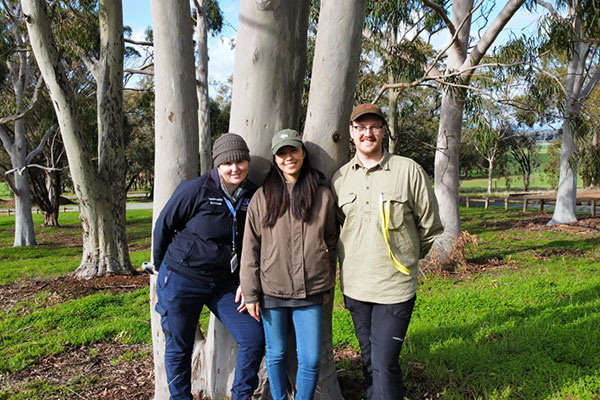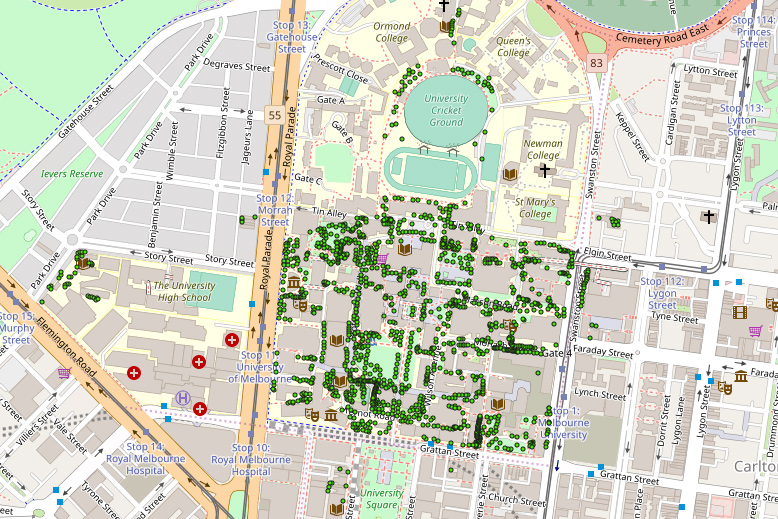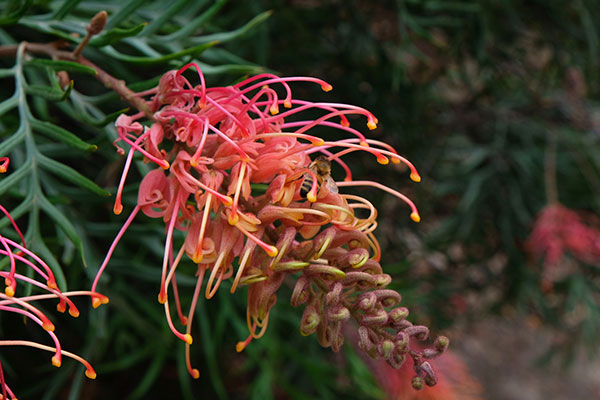Biodiversity
The University of Melbourne campuses feature magnificent natural and created landscapes with a rich abundance of flora and fauna. They are regarded as some of the best managed and highly biodiverse privately owned landscapes in Victoria. This urban and rural biodiversity adds value to all aspects of university life for students, staff and visitors.
Get involved
-
On-campus tours
Join a Sustainability or Biodiversity Tour to learn how the University taps into the energy of the earth and sun, reduces waste, and supports flora and fauna on campus.
-
QuestaGame & UniBioQuest
Join the quest for biodiversity and compete in a global competition, while contributing data for conservation research.
-
Discover fauna and fungi on campus
Staff, students and visitors can help protect on-campus biodiversity by recording animals, insects and fungi they find on University grounds using citizen science apps.
Measuring our on-campus biodiversity
The University is measuring and preserving its on-campus biodiversity through the Biodiversity Baseline Data Project.
Using seven pioneering biodiversity metrics, the project aspires to help the University in achieving no net loss of on-campus biodiversity.

Bees@UniMelb
Bees@UniMelb is an initiative that aims to educate staff and students about bees and beekeeping on campus. Watch this video to learn about why bees are so important to urban biodiversity and go to this link to learn about “The Great Honey Wars”.
Hives are located at the Parkville and Southbank campuses, including Australia’s first chimney hive in the System Garden. The hives are managed by the Melbourne Beekeepers Club under the auspices of the Sustainability Team.
Depending on the beekeeping season, the hives can produce an excess of honey for harvest. This is available for purchase from time to time from honey-sale stalls which are advertised in staff and student newsletters.
Our campuses as living labs
-
The System Garden
A unique garden on the Parkville campus that showcases plant diversity while promoting social interaction and learning.
-
Bee and Insect hotel
The Bee and Insect Hotel is located at the main entrance (via Professors Walk) of the System Garden and attracts native bees and insects to the garden.
-
3D-printed powerful owl hollows
Students, researchers and staff have collaborated to create and install a 3D-printed breeding hollow on campus for the threatened powerful owl.
Protecting our biodiversity for future generations

Mapping trees on campus
Urban forests are vital to health of cities and our University campuses. However, construction projects and climate change place urban forests under pressure.
The University aims to protect its trees into the future through maintaining a record of their location and species details on campus. Our interactive map shows tree records on the Parkville, Southbank, Burnley and Werribee campuses and displays information such as National Trust Tree register and Tree Vulnerability Risk.
Biodiversity Management Plan
To maintain its world-class landscapes, the University has established biodiversity targets that cover aspects of operations, research, and teaching and learning in its Biodiversity Management Plan 2017-2020. Fulfilment of targets will help the University preserve its diverse on-campus biodiversity for future generations to come.
The Biodiversity Management Plan 2030 is planned for release in early 2024 and aims to advance the University as a leader in conservation of species both on and off campus.
